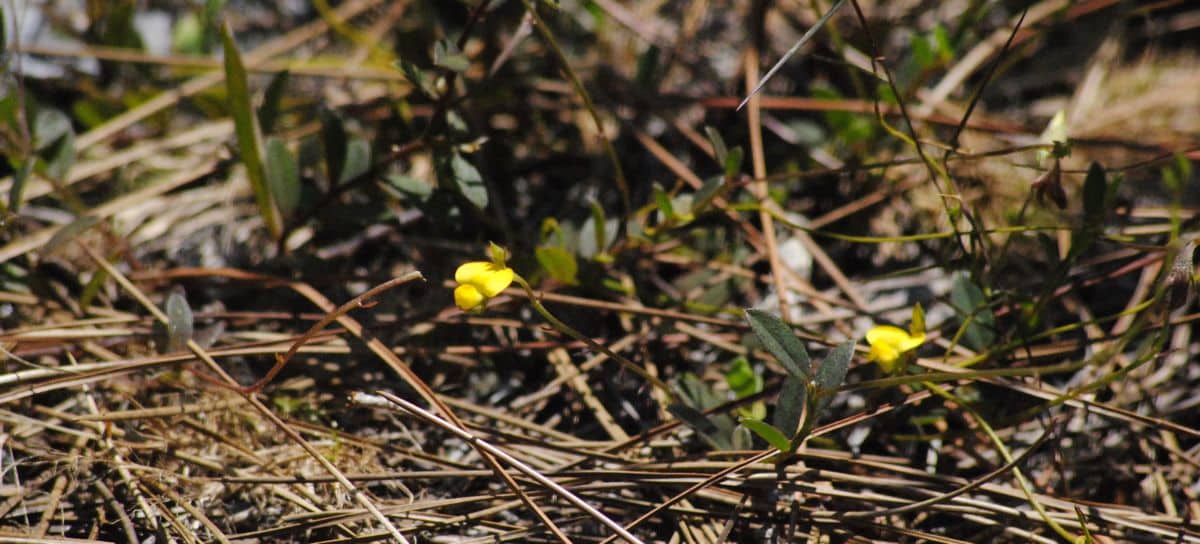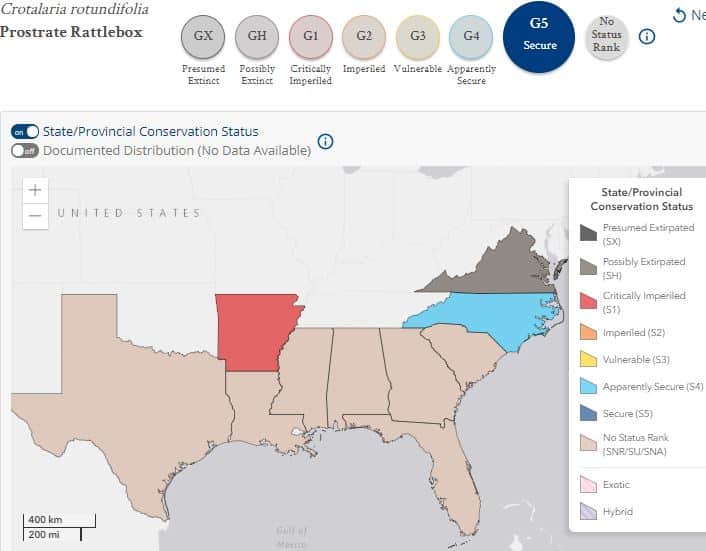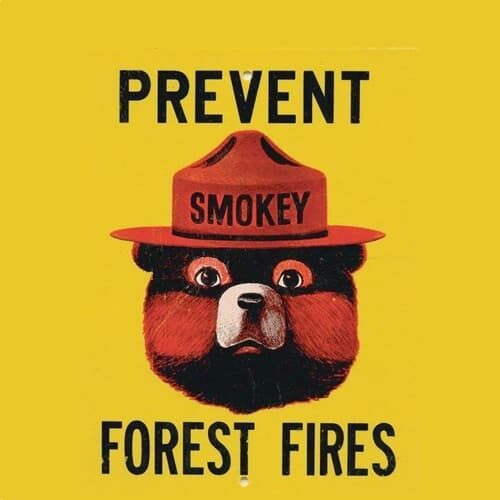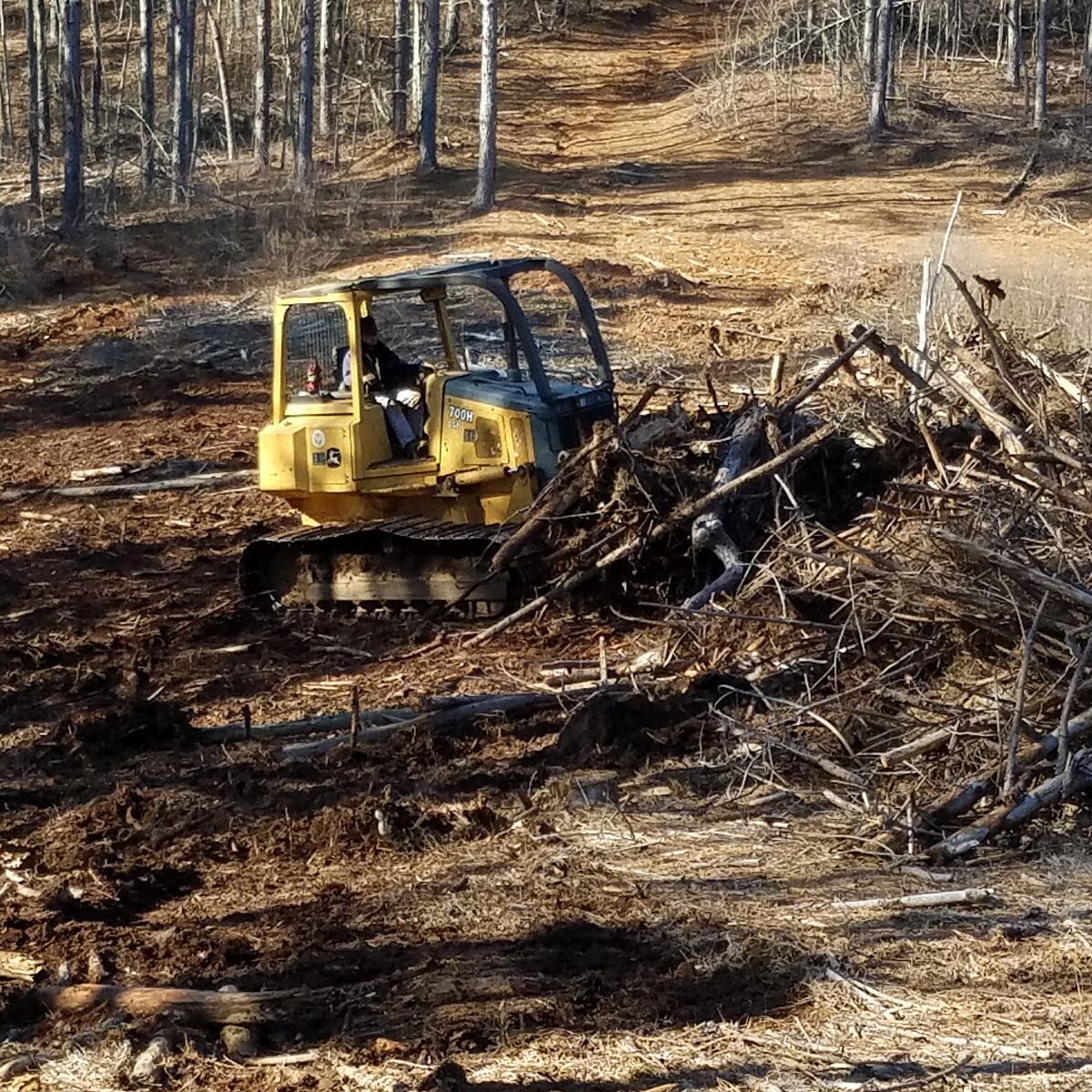Rabbit Bells
Crotalaria rotundifolia
Status: Secure
Rabbit bells, also referred to as rattlebox, is a native plant species that is part of the legume or bean family. Legumes are important in the longleaf pine ecosystem because they get some of their nutrients from the air! They usually grow in places where the soil is low in nitrogen. They can absorb nitrogen from the atmosphere and 'fix' or make it into a usable form in the soil. This makes legumes important for helping improve poor soil, especially soil that experiences regular fires. Rabbit bells grow low to the ground and have a small yellow flower. They develop a small seed pod that, when dry, rattles. That's why they are called rabbit bells!


Habitat & Range
Rabbit bells can be found growing across the southeastern United States. They prefer sandy soil and lots of sunlight to thrive.
Food Web & Energy Flow
As a member of the legume family, rabbit bells get their energy through photosynthesizing sunlight, and they get some of their nutrients from the soil and some, namely nitrogen, from the atmosphere. Legumes play an important role in improving soil nutrients for other plant species that are not in the legume family.
Relationship to Fire
When a low-intensity fire burns through a forest, it burns the first layers of the soil and the plants growing along the forest floor. In a longleaf forest, this first layer of soil tends to be sandy in most places, so there is not much organic material to create important nutrients for plants. So legume species are important because they fix nitrogen from the atmosphere to make the soil more nutrient rich for other plant species, including trees.
These species also depend on fire because they need lots of space and sunlight to grow. Without regular fires, the forest floor would grow too shady and these plants would not be able to survive.


Conservation Status
Rabbit bells are considered Secure and are not currently under any major threats. Some states have different levels of pressure due to habitat destruction and fire suppression but they are still minor threats.
Human Impacts/ Threats

Fire Suppression
Many people think of fires in the forest as bad, so they work hard to prevent or suppress them. But longleaf forests NEED regular fire to support habitat for the species that live there!

Land Use Conversion
Longleaf forests and the habitat it supports is being cleared or converted to use the land for other uses like houses, roads, agriculture, and even to grow different types of trees to sell.
Resources
Natives for your Neighborhood. Rabbit Bells
Lady Bird Johnson - Wildflower Center. Rabbitbell
